Humans experience 200 times more radiation standing on the moon than standing on the Earth
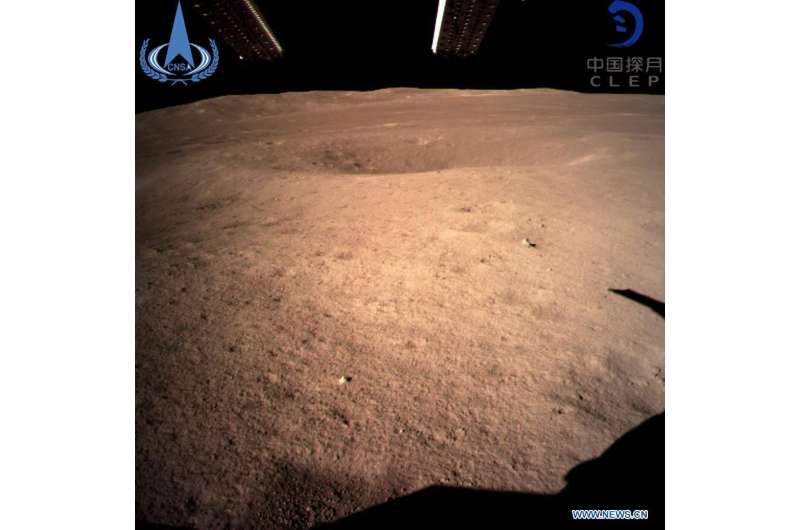
January 31, 2021, will mark 50 years since the launch of Apollo 14. This historic mission was the first to broadcast a color television signal from the surface of the moon and marked the heroic return to space of America's first astronaut, Alan Shepard, who famously hit two golf balls off of the lunar regolith. While the significance of Apollo 14 and the Apollo program in general can't be overstated, Shepard spent a mere two days on the lunar surface. The record for the longest human presence on the moon, held by Eugene Cernan and Harrison Schmitt, is just over three days. All of the Apollo astronauts were exposed to high levels of radiation on the surface of the moon, but with such relatively short stays that the risk was considered to be acceptable.
With NASA's Artemis program intending to kick off an era of long-term human habitation on the moon, prolonged exposure to intense radiation poses a serious threat to future astronauts' health and well-being. One of the first steps in mitigating the dangers is developing a body of data outlining precisely the level and nature of the radiation. Research published in September based on data collected from the Lunar Lander Neutrons and Dosimetry experiment aboard the Chinese robotic lunar lander Chang'E 4 reveals long-term measurement of radiation levels on the lunar surface. This is the first time extended measurements of the levels of radiation on the moon have been collected and will help inform the design and shielding of future lunar habitats.
It has always been clear that significant shielding from space radiation would be necessary to protect long-term inhabitants of the moon from deleterious health effects. An important step in the design of any such structures is having an in-depth understanding of exactly what level of radiative threat is present. The data and associated research from Chang'E 4 give unprecedented insight into the nature of the space radiation environment on the moon. The readings from the spacecraft can be used to determine the equivalent dose rate, a biologically weighted measure of the dose of radiation over time. This produces a result of 60 microsieverts per hour. This is more than twice the level of radiation than astronauts aboard ISS face, five to 10 times more than the radiation on long-haul flights, and 200 times greater than the radiation present on the surface of the Earth.
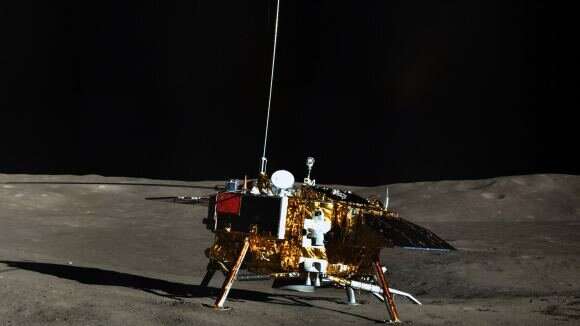
There are two primary sources of radiation with which future lunar inhabitants will have to contend. First, there are galactic cosmic rays or GCRs. These consist mostly of charged particles such as protons and naked helium nuclei, with about 1% of GCRs being made up of nuclei of heavier elements. Since the damage caused by charged particles scales with the square of the nuclear charge, these heavier elements can cause disproportionately high damage to human tissue. This radiation comes from millions of sources scattered all over the sky and is very consistent in its level.
The second radiative threat is solar particle events or SPEs. As the name implies, these are the result of sporadic events on the sun such as coronal mass ejections (CMEs) or solar flares. Radiation from SPEs is much less predictable than GCRs but can be so destructive as to cause acute tissue damage from a single event or exposure.
Not only are SPEs a hazard to future moon inhabitants, but they can also impact life on Earth. The 1989 geomagnetic storm and associated power outage that left millions in Quebec and the northeastern U.S. without electricity is a particularly notable example of the impact of solar eruptions on humanity. Thankfully, the strong magnetic field of the Earth protects us from the vast majority of damaging charged particles streaming at us from the sun. This is not the case for the moon, which lacks a magnetic field and atmosphere, leaving anybody on the surface exposed to the full strength of incoming space radiation.
-
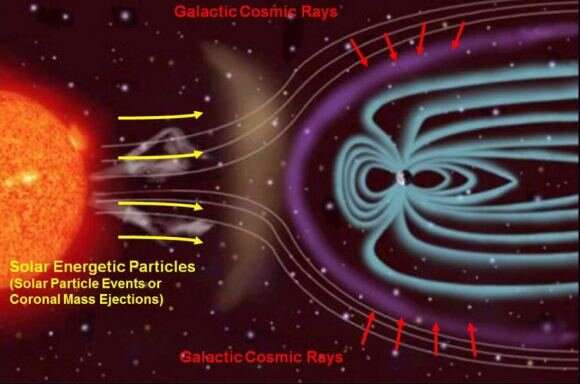
Illustration of the Earth’s magnetic field interacting with GCRs and SPEs. Credit: NASA/JPL-Caltech/SwRI -
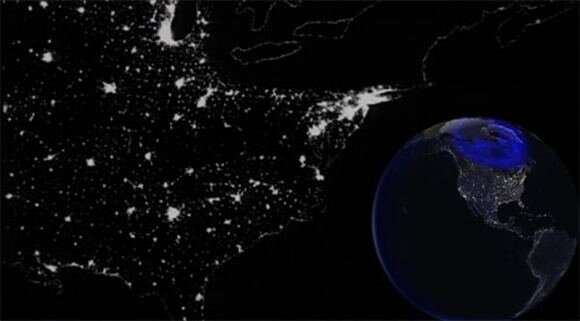
An artist’s rendition of the impact of the 1989 geomagnetic storm on the power grid of North America. Credit: NASA
Even though GCRs don't have the dangerous spikes in intensity seen in SPEs, chronic exposure to such ionizing radiation has been linked to degenerative central nervous system disease, cataracts and cancer. Proper protection from both sources of radiation is critical for astronauts to avoid serious or even catastrophic health consequences from lunar expeditions.
The third source of dangerous subatomic particles on the lunar surface is, surprisingly, the moon itself. It might be easy to dismiss the essentially inert rock and dust of the moon as non-threatening, but that would be a terrible oversight. As external radiation from galactic sources and the sun collides with the atoms in the lunar soil, neutrons and gamma rays can be released causing their own tissue damage. The half-life of a free neutron is just over 10 minutes, so these unstable particles must originate from nuclear reactions on the surface of the moon as they could not survive the long travel times from distant space sources.
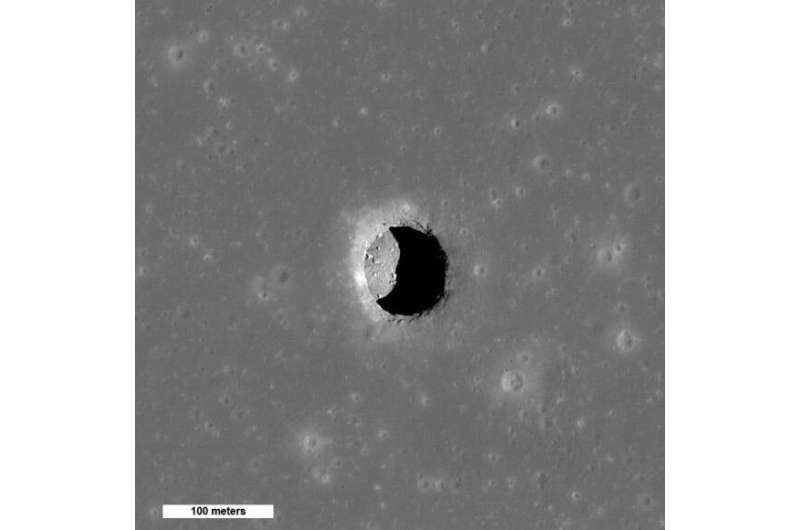
It is clear that significant shielding from this radiation must be present for humans to survive on the moon. Building living quarters protected by thick layers of lunar rock seems to be the most likely solution to the problem of space radiation on the moon. One particularly compelling possibility is the construction of living spaces within lunar caves. Large, ancient, hollow lava tubes left over from lunar volcanism billions of years ago are known to exist on the moon, some with openings to the surface resembling the cenotes of Mexico. Thanks in part to the research of Chang'E 4, we may find the most advanced human explorations in history taking shelter in caves on another world, much the way our ancient ancestors sheltered in Earthly caves thousands of years in the past.
Provided by Universe Today





















